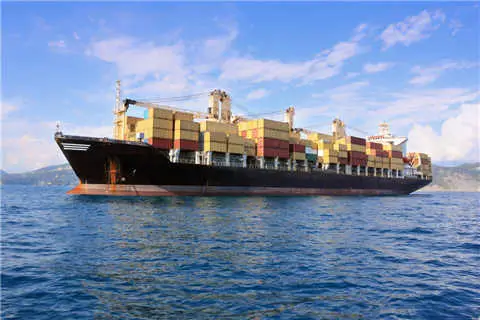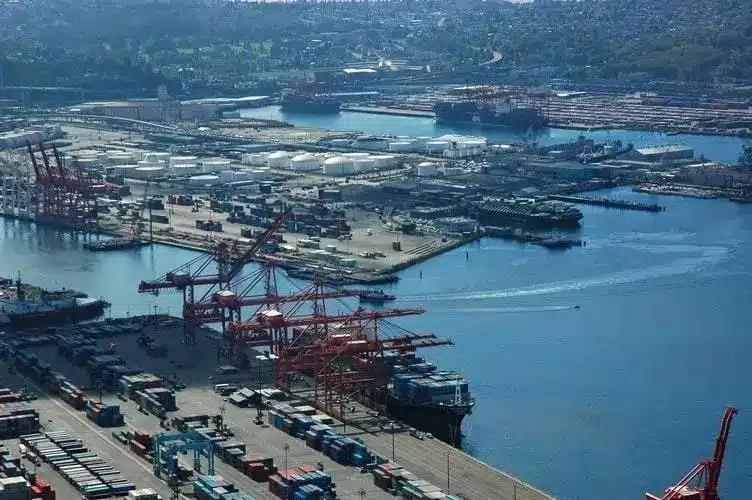Table of Contents
The scope of foreign trade transactions is very broad, as it involves various industries. Today, we are going to understand ten delivery terms commonly used in foreign trade transactions:EXW,FCA,FOB,CPT,CIF,CIP,FAS,CFR or C&F,DAF,DES,DAP,DAT or DDP.
Ex Works (EXW)
The term “EXWorks” stands for “Ex Works,” meaning the seller is responsible for delivering the goods at their premises, such as the factory or warehouse, and does not bear the responsibility of loading the goods onto the buyer’s vehicle or handling customs clearance. The buyer assumes all costs and risks of transporting the goods from the seller’s location to the intended destination.
Example:Imagine buying fresh vegetables directly from a farm. The farmer says you need to come to the farm to pick them up. You arrange transportation to get the vegetables to your grocery store.
Free Carrier (FCA)
“FreeCarrier” refers to the seller’s responsibility to deliver the goods, clear them for export, and hand them over to the carrier nominated by the buyer at a specified location. The risk and costs are transferred to the buyer once the goods are handed over to the carrier. This term applies to any mode of transportation.
Example:You order a new TV online from another city. The seller delivers it to the courier service’s office, and then the courier takes over responsibility for delivering it to your doorstep.
Free Alongside Ship (FAS)
“FreeAlongsideship” means the seller delivers the goods alongside the vessel at the specified port of shipment. From this point onwards, the buyer bears all risks and costs associated with the goods, including arranging for export clearance. This term is applicable to maritime or inland waterway transportation.
Example:You import toys from another country. The seller delivers them to the dock, and then it’s your responsibility to load them onto the ship for transport.

Free on Board (FOB)
“FreeonBoard” indicates that the seller delivers the goods over the ship’s rail at the designated port of shipment. Once the goods pass the ship’s rail, the buyer assumes all risks and costs associated with the goods, including arranging for transportation. This term applies to maritime or inland waterway transportation.
Example:You buy a car from a dealership in another state. The dealership loads the car onto a truck at their location, and once it’s on the truck, it’s your responsibility.
Cost and Freight (CFR or C&F)
“CostandFreight” means the seller must pay the expenses and freight necessary to transport the goods to the specified destination port. However, the risk of loss or damage to the goods, as well as any additional costs incurred after the goods pass the ship’s rail at the designated port, transfers to the buyer. The seller is also required to handle export clearance for the goods. This term applies to maritime or inland waterway transportation.
Example:You order a piece of furniture from overseas. The seller pays to ship it to the port, but once it’s on the ship, it’s your responsibility to get it to your home.
Cost, Insurance and Freight (CIF)
“Cost,InsuranceandFreight” indicates that, in addition to the obligations under the CFR term, the seller must also procure marine insurance against the buyer’s risk of loss or damage to the goods during carriage and pay the insurance premium. Therefore, the seller is responsible for arranging transportation to the destination port and insuring the goods during transit. This term applies to maritime or inland waterway transportation.
Example:You order a painting from an artist abroad. The seller ships it to you and buys insurance to cover any damage during transit.

Carriage Paid to (CPT)
“CarriagePaidto” means the seller pays the freight for the goods to be transported to the specified destination. The risk of loss or damage to the goods, as well as any additional costs incurred after the goods are delivered to the carrier’s care, transfers to the buyer from that point onwards. Additionally, the seller must handle export clearance for the goods. The term “carrier” refers to any person who, in a contract of carriage, undertakes to perform or arrange for transportation by rail, road, air, sea, inland waterway, or a combination thereof. If subsequent carriers are used to transport the goods to the agreed destination, the risk transfers to the buyer when the goods are handed over to the first carrier. This term applies to various modes of transportation, including multimodal transportation.
Example:You buy a new phone online. The seller arranges for it to be shipped to your doorstep, and once it’s with the carrier, it’s your responsibility.
Carriage and Insurance Paid to (CIP)
“CarriageandInsurancePaidto” indicates that, in addition to the obligations under the CPT term, the seller must also arrange marine insurance against the buyer’s risk of loss or damage to the goods during carriage and pay the insurance premium. During this period, the seller must pay the freight to the destination port, while the buyer assumes all risks and additional costs after delivery by the seller. This term applies to any mode of transportation.
Example:Similar to CPT, but the seller also arranges insurance to cover any damage during transit.
Delivered at Frontier (DAF)
“DeliveredatFrontier” means the seller’s obligation to deliver the goods, cleared for export, at a named point at the frontier but before the customs border of the adjoining country. The seller must provide the goods on the means of transport for unloading at that named place and is responsible for export clearance but not for import clearance. The term “frontier” can be any frontier, including the border of the exporting country. Therefore, accurately defining the specified point and delivery point is crucial. This term primarily applies to goods transported by rail or road but can also be used for other modes of transportation.
Example:You order goods from a neighboring country. The seller delivers them to a border checkpoint, and from there, you handle the rest.
Delivered Ex Ship (DES)
“DeliveredExShip” refers to the seller’s obligation to deliver the goods on board the vessel at the designated port of destination without clearing the goods for import. Therefore, the seller must bear all costs and risks associated with transporting the goods to the specified destination port. This term is only applicable to maritime or inland waterway transportation.
Example:You buy a boat from overseas. The seller delivers it to the port, and from there, you’re responsible for getting it through customs and to your dock.

Delivered at Place (DAP)
DAP means the seller delivers the goods to the buyer at the agreed-upon destination, ready for unloading, but not cleared for import. The seller bears all risks and costs until the goods are unloaded at the specified place.
Example: You buy a yacht from overseas. The seller delivers it to your designated marina. However, you’re responsible for clearing customs and getting it from the port to your dock.
Delivered at Terminal (DAT)
DAT indicates that the seller delivers the goods to the buyer at the designated terminal at the destination, ready for unloading, but not cleared for import. The seller bears all risks and costs until the goods are unloaded at the terminal
Example: You purchase a jet ski from abroad. The seller delivers it to the terminal at your local port. You’ll need to handle customs clearance and transport it from the terminal to your waterfront property.
Delivered Duty Paid (DDP)
DDP means the seller delivers the goods to the buyer at the agreed-upon destination, cleared for import. The seller bears all risks and costs, including customs duties and taxes, until the goods are delivered to the buyer.
Example: You order a speedboat from another country. The seller arranges delivery to your dock, including customs clearance. You simply receive the boat at your location without any additional hassle or expenses.
Summary of Various Freight Transaction Methods
| Incoterm | Responsibility | Risk | Applicable Transport Modes | Insurance Responsibility | Customs Clearance Responsibility | Final Delivery Point | Cost Allocation | Transfer of Risk Timing | Responsibilities During Transit |
|---|---|---|---|---|---|---|---|---|---|
| EXW (Ex Works) | Seller delivers goods at their premises | Buyer bears transportation costs | Any mode of transport | Buyer to arrange insurance | Buyer handles import clearance | Seller’s premises | Buyer bears all transportation costs | Upon delivery to buyer | Seller may need to package and label appropriately |
| FCA (Free Carrier) | Seller delivers goods, ready for export, to carrier | Buyer bears transportation costs | Any mode of transport | Buyer to arrange insurance | Buyer handles import clearance | Agreed-upon delivery point | Buyer bears all costs associated with goods | Upon delivery to carrier | Seller may need to package and label appropriately |
| FAS (Free Alongside Ship) | Seller delivers goods alongside vessel at port | Buyer bears transportation costs | Maritime or inland waterway | Seller to arrange marine insurance | Seller handles export clearance | Agreed-upon port of shipment | Seller bears costs to deliver to port | When goods pass ship’s rail | Seller may need to package and label appropriately |
| FOB (Free on Board) | Seller delivers goods over ship’s rail at port | Buyer bears transportation costs | Maritime or inland waterway | Seller to arrange marine insurance | Seller handles export clearance | Agreed-upon port of shipment | Seller bears costs to deliver to port | When goods pass ship’s rail | Seller may need to package and label appropriately |
| CFR (Cost and Freight) | Seller pays costs and freight to named destination | Buyer bears transportation costs | Maritime or inland waterway | Seller to arrange marine insurance | Seller handles export clearance | Agreed-upon destination port | Seller bears costs to deliver to port | When goods pass ship’s rail | Seller may need to package and label appropriately |
| CIF (Cost, Insurance and Freight) | Seller pays costs, freight, and insurance to named destination | Buyer bears transportation costs | Maritime or inland waterway | Seller to arrange marine insurance | Seller handles export clearance | Agreed-upon destination port | Seller bears costs to deliver to port | When goods pass ship’s rail | Seller may need to package and label appropriately |
| CPT (Carriage Paid To) | Seller pays transportation to named destination | Buyer bears transportation costs | Any mode of transport, including multimodal | Seller to arrange transportation insurance | Seller handles export clearance | Agreed-upon destination | Seller bears costs to deliver to destination | Upon delivery to carrier/first carrier | Seller may need to package and label appropriately |
| CIP (Carriage and Insurance Paid To) | Seller pays transportation and insurance to named destination | Buyer bears transportation costs | Any mode of transport, including multimodal | Seller to arrange transportation and insurance | Seller handles export clearance | Agreed-upon destination | Seller bears costs to deliver to destination | Upon delivery to carrier/first carrier | Seller may need to package and label appropriately |
| DAP (Delivered at Place) | Seller delivers goods to buyer at agreed-upon destination, ready for unloading | Buyer bears import clearance costs | Any mode of transport | Seller to arrange transportation insurance | Seller handles export and import clearance | Agreed-upon destination | Seller bears costs to deliver to destination | Upon delivery to destination | Seller may need to package and label appropriately |
| DAF (Delivered at Frontier) | Seller delivers goods at named point at frontier | Buyer bears import clearance costs | Rail or road transport, may include other modes | Seller to arrange transportation insurance | Seller handles export clearance | Agreed-upon named place at frontier | Seller bears costs to deliver to frontier | Upon delivery at named place | Seller may need to package and label appropriately |
| DES (Delivered Ex Ship) | Seller delivers goods on board vessel at destination | Buyer bears import clearance costs | Maritime or inland waterway | Seller to arrange transportation insurance | Seller handles export clearance | Agreed-upon port of destination | Seller bears costs to deliver on board vessel | When goods delivered on board vessel | Seller may need to package and label appropriately |
| DDU (Delivered Duty Unpaid) | Seller delivers goods, not cleared for import, at destination | Buyer bears import clearance costs | Any mode of transport | Seller to arrange transportation insurance | Seller handles export and import clearance | Agreed-upon destination | Seller bears costs to deliver to destination | Upon delivery to destination | Seller may need to package and label appropriately |
| DDP (Delivered Duty Paid) | Seller delivers goods, cleared for import, at destination | Seller bears import clearance costs | Any mode of transport | Seller to arrange transportation insurance | Seller handles export and import clearance | Agreed-upon destination | Seller bears costs to deliver to destination | Upon delivery to destination | Seller may need to package and label appropriately |
If you want to understand the differences between various Freight Transaction Methods such as DDP vs FOB, FCA vs DAP, FOB vs DAP, FOB and EXW, FCA vs FOB, FCA vs FOB, and so on, you can refer to the table above. By comparing them, it will become clear.
Let NexaToys do it for you!
We are NexaToys.Our team is based in Chenghai, Shantou, which is strategically located with access to over 15,000 genuine toys factories in the local supply chain. The majority of our team members possess more than 10 years of experience in the toy industry, are well-acquainted with local toy factories, and stay updated on the latest developments in the toy sector. We can assist you in sourcing toys from manufacturers at the best prices.
We are listed in toylistings.org’s Educational Toys Directory